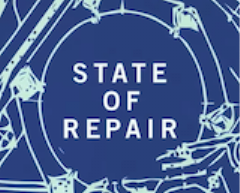Image: Apple screengrab
State of Repair is Motherboard's exploration of DIY culture, device repair, ownership, and the forces fighting to lock down access to the things you own.
“I can show you the cost for just the part before we begin,” another man, playing the part of repair technician says.
Advertisement
After this, the technician launches into an explanation of why it’s best for people to replace broken iPhone parts with genuine Apple products. “A genuine Apple part has to pass AppleCare engineering criteria,” the technician says, explaining that a screen from Apple will be tested as if it had just come off the factory floor. “With a genuine Apple display, all the features you’ve come to rely on behave seamlessly...that’s not the case with third party displays.”Some of the videos obtained by Motherboard appear to be final products while others seem to be in the process of being edited, with what appears to be scratch voiceover work and video and images that do not appear to be final. That said, the scripting and talking points in the videos closely match what Apple Authorized Service Professionals and third party repair professionals have been saying for years.The training videos are meant to help Apple’s certified repair stores navigate a world where customers can get replacement parts far cheaper than what Apple charges for basic repairs. For years, Apple has made it harder for independent repair stores to fix phones, nudging customers to go to Apple stores instead. In response, there's been a rising right-to-repair movement that wants to make it easier for people to repair their own stuff.
Advertisement
Advertisement
Advertisement
Advertisement

